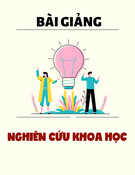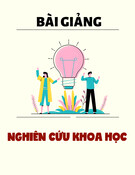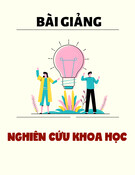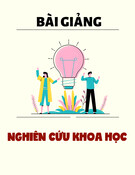
66
HUNG VUONG UNIVERSITY JOURNAL OF SCIENCE AND TECHNOLOGY Nguyen Thi Thanh Tuyen
*Email: nguyenthithanhtuyen@hvu.edu.vn
TẠP CHÍ KHOA HỌC VÀ CÔNG NGHỆ
TRƯỜNG ĐẠI HỌC HÙNG VƯƠNG
Tập 37, Số 4 (2024): 66 - 74
HUNG VUONG UNIVERSITY
JOURNAL OF SCIENCE AND TECHNOLOGY
Vol. 37, No. 4 (2024): 66 - 74
Email: tapchikhoahoc@hvu.edu.vn Website: www.hvu.edu.vnjst.hvu.vn
RESEARCH ON THE EDUCATION OF SLOW LEARNERS IN
MATHEMATICS: BIBLIOMETRIC ANALYSIS OF SCIENTIFIC
BIBLIOGRAPHY FROM THE SCOPUS DATABASE
Nguyen Thi Thanh Tuyen1*
1Faculty of Natural Sciences, Hung Vuong University, Phu Tho
Received: 22 November 2024; Revised: 04 December 2024; Accepted: 09 December 2024
DOI: https://doi.org/10.59775/1859-3968.238
Abstract
Supporting slow learners is a societal responsibility and an essential educator mission. Appropriate support
helps slow learners improve their academic results and builds confidence and motivation for success in
life. Despite numerous studies on slow learners, many aspects remain unexplored. In this research, we apply
bibliometric analysis to evaluate the scientific outcomes of publications related to the study of slow learners in
mathematics, indexed in the Scopus database. The analysis results show that the first publications appeared in
1962, with the most substantial publication growth from 2018 to 2020. The United States, Indonesia, the United
Kingdom, China, and Malaysia are the countries with the most publications in this research direction. Research
cooperation in this field is not strong; studies are often regionally specific.
Keywords: Slow learner, mathematics, education, bibliometric analysis, Scopus.
1. Introduction
Learners play an essential role in
determining teachers’ teaching strategies.
Identifying the right learners helps teachers
better understand the characteristics and
needs of each student in the class, enabling
them to adjust their teaching methods
accordingly [1]. In addition, understanding
the characteristics of learners also helps
researchers better understand how to learn
and develop more effective educational
programs that meet the diverse needs of
students. By identifying the right learners,
managers can allocate resources such as
budget, human resources, and facilities most
effectively to meet the unique needs of each
group of students [2].
This topic is referred to with various terms
such as: slow learners [3], low achievers,
performance is poor in schools, marginal
learners [4], learners at risk, or students
with learning difficulties [5] students with
scholastic backwardness [6, 7]. This is an
important basis for us to determine the search
keywords in this study. Scientometrics or
bibliometrics is a relatively new branch
of science concerned with the quantitative
evaluation of science in publications.
Scientific quantification is considered an
objective method for measuring the quality

67
HUNG VUONG UNIVERSITY JOURNAL OF SCIENCE AND TECHNOLOGY Vol. 37, No. 4 (2024): 66 - 74
and influence of scientific publications.
Quantitative analysis and evaluation of
scientific publications or scientometrics
provides quantitative information about
scientific publications and citations. This
information can help scientists have their
research orientation, or units, organizations,
and governments have a basis for allocating
research funding [8].
In this article, the author’s objective is to
use bibliometrics of scientific publications
on slow learner education indexed in the
Scopus database in the past time. The two
main objectives include (a) a summary of the
general characteristics and trends of scientific
publications, the most crucial source
journals, and the most effective scholars;
(b) an analysis of international cooperation
among countries in this field.
2. Methods
This study used a general science
mapping workflow method that comprised
the following five rigorous steps: 1) Study
design; 2) Data collection; 3) Data analysis;
4) Data visualization; and 5) Interpretation
[9, 10]. During the research design step, the
main research question identified was: What
is the bibliometric information of scientific
publications on the slow learner in the Scopus
database in the past time? The data collection
step is divided into three sub-steps: data
collection, data filtering, and data cleaning.
- Step 1: Data collection. Five central
bibliographic databases can be used to conduct
a bibliometrics analysis, including Web of
Science (WoS), Scopus, Google Scholar,
and Microsoft Academic và Dimensions
[11]. Among them, WoS and Scopus are the
most used biometric analytics tools. In this
study, we decided to use the Scopus database
as a search engine because it has a more
significant number of indexed documents
than other databases [12]. The authors
perform the search from the Scopus database
(http://www.scopus.com) with advanced
search options for entering search terms and
syntactically matched operators of this search
engine. The search keywords identified
include keywords related to mathematics
education:“slow learner”, “low achievers”,
“arginal learners”, “learners at risk”,
“students with scholastic backwardness”,
“students with learning difficulties”,
“performance is poor in schools“, “students
with learning difficulties”. These keywords
are searched for in the document’s abstract,
keyword, or title. Data is limited to the type of
document: Article, Conference Paper, Book
or Book Chapter, and Review. We also limit
our search to English documents. We also
limit our search to papers published before
2024 because the publications indexed in the
Scopus database have a certain lag compared
to when such publications are published,
resulting in the publications published in
2023 not being fully and timely updated.
Query data was made from the Scopus
database on 10 January 2024. As a result,
260 documents were obtained.
- Step 2: Data filtering. The authors
filter data by censoring titles, abstracts, and
keywords to remove documents that are
not directly related to the research problem.
Eliminated articles are articles that are not
in the field of educational science or articles
whose content is not aimed at students who
are slow in math.The number of copies
remaining is 215.
- Step 3: Data cleaning. The downloaded
data needs to be cleaned because the quality
of the analysis is highly dependent on the
quality of the input data [13]. We have
corrected some inconsistent information
in the data collected, such as the Author’s
name, workplace, etc.
- Data analysis and visualization: Various
analytic techniques have been applied to
extract the information from the set of
publications. The general information of the

68
HUNG VUONG UNIVERSITY JOURNAL OF SCIENCE AND TECHNOLOGY Nguyen Thi Thanh Tuyen
publication collection has been summarized,
and the annual number of publications is
analyzed to derive the development trends of
the research field. Each country’s contribution
based on the number of articles and citations
was analyzed to determine what worked
best. The authors used Scopus’s available
tools, VOSViewer and Biblioshiny software,
to conduct the data analysis.
- Limitations of the study: Firstly, only
considering publications on slow learners
in mathematics in the Scopus database is
not enough to assess the development and
trends of this field. Secondly, the accuracy
of information of standardized publications
in the Scopus database affects our analysis
results, such as names of organizations,
names of scholars, abbreviations, etc.
Thirdly, the data filtering process was
performed manually with criteria for removal
or retention in the research group, but it is
difficult to avoid shortcomings. Fourthly,
some limitations in technical functions of
supporting software Biblioshiny; VoSviewer
make our analysis results may not be perfect.
Finally, there are many other tools such as
CiteSpace (Chen, 2006), SciMat (Cobo et al.,
2012)... that have advantages in bibliometric
analysis but we have not used them in this
study. Combining these tools will be done in
future studies.
3. Results and Discussion
3.1. General information and research trends
The leading information about the dataset
of the article is shown in Table 1. The total
number of publications in the collection
is 215, published in 152 different sources
(scientific journals, books, book chapters,
etc.) from 1962 to 2024. Most are scientific
articles (168 articles) and proceedings of
scientific conferences (39 articles). The total
number of citations recorded at the time was
17.15 citations per document. This is a large
number compared to other fields of research.
Five hundred seventy-seven authors have
participated in research and publication
in this field (an average of 2.87 authors/
publication). The total number of authors
publishing their research is 48; these authors
have published 49 scientific publications
with a single author, accounting for 22.8%
of the total publications. This is quite a high
rate when compared to other studies in the
field of educational sciences
Research authors in this field tend to publish
a lot in scientific conferences (accounting for
18.1% of the total publications). In social
science, the percentage of conference posts
accounts for only about 6% of the publications
indexed in the Scopus database (according to
data from https://www.scopus.com).
Table 1. General information about data
MAIN INFORMATION ABOUT DATA
Timespan 1962:2024
Sources (Journals, Books, etc) 152
Documents 215
Annual Growth Rate % 0
Document Average Age 13.5
Average citations per doc 17.15
References 7943
DOCUMENT CONTENTS
Keywords Plus (ID) 449
Author’s Keywords (DE) 486
AUTHORS
Authors 577
Authors of single-authored docs 48
AUTHORS COLLABORATION
Single-authored docs 49
Co-Authors per Doc 2.87
International co-authorships % 12.09
DOCUMENT TYPES
Article 168
Book chapter 8
Conference paper 39
From 1962 to 2010, there were not many
studies on slow learners. During this period,
publications were inconsistent, with only

69
HUNG VUONG UNIVERSITY JOURNAL OF SCIENCE AND TECHNOLOGY Vol. 37, No. 4 (2024): 66 - 74
one to three publications per year, and some
years had none. The highest number was in
1996, with five publications, followed by a
gradual decline, reaching six in 2007. In 20
10, the number of publications surged to 11 and
was subsequently maintained annually, although
the number remained modest, ranging from
7 to 9 publications per year. Starting in 2018,
researchers began to pay more attention to slow
learners, with annual publications increasing to
between 11 and 19. These publications were
mainly presented in scientific journals and
conferences (Figure 1). During this period,
publications were inconsistent, with only one
to three publications per year, and some years
had none. The highest number was in 1996,
with five publications, followed by a gradual
decline, reaching six in 2007. In 2010, the
number of publications surged to 11 and was
subsequently maintained annually, although
the number remained modest, ranging from
7 to 9 publications per year. Starting in 2018,
researchers began to pay more attention to slow
learners, with annual publications increasing to
between 11 and 19. These publications were
mainly presented in scientific journals and
conferences (Figure 1).
Figure 1. Annual scientific production (The figure by Biblioshiny)
3.2. Distribution by country/territory
According to Scopus’s data, the authors
from 35 countries/regions participated
in research on this topic. Information on
countries with five or more publications
is shown in. The number of publications
per country is recorded when at least one
author in the publication adds the name of
the agency with its address in that country.
The country that contributes the most
publications in this field is the USA, which
has 30 published studies (accounting for
13.95% of the total publications). Next is
Indonesia, which has 14 publications; the
United Kingdom, which has 12; and China,
which has 11. The remaining countries
have fewer than ten publications in this
field (Figure 2).

70
HUNG VUONG UNIVERSITY JOURNAL OF SCIENCE AND TECHNOLOGY Nguyen Thi Thanh Tuyen
Figure 2. Top 12 countries with the most publications (The figure by Biblioshiny)
Indonesia and the United States are two
countries that stand out in research on slow
learners in mathematics because: Indonesia
places great importance on developing
inclusive education programs that help
every student access the country’s basic
education. At the same time, the influence
of national culture contributes to promoting
learning methods that connect knowledge
with practice. Meanwhile, the United States
has an advanced education system with
large resources from government and non-
governmental organizations. US universities
and research centers are often the first to
apply artificial intelligence and data to
find effective solutions for students with
difficulties in learning mathematics, creating
the premise for groundbreaking research.
Figure 3: Publication output over time of the top 5 countries with the most publications
(The figure by Biblioshiny)
As shown in Figure 3, the annual output of
countries indicates that the United States has
shown the most interest in slow learners, with
publications steadily increasing since 1989.
The United Kingdom ranks second in attention
to this research area. However, the number of
scientific publications from the United Kingdom
is lower than that of Indonesia, even though



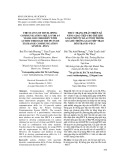


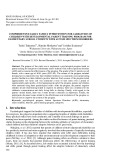

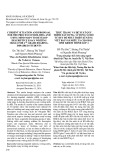












![Định hướng giáo dục STEM trong trường trung học: Tài liệu [chuẩn/mới nhất]](https://cdn.tailieu.vn/images/document/thumbnail/2025/20251124/dbui65015@gmail.com/135x160/25561764038505.jpg)
